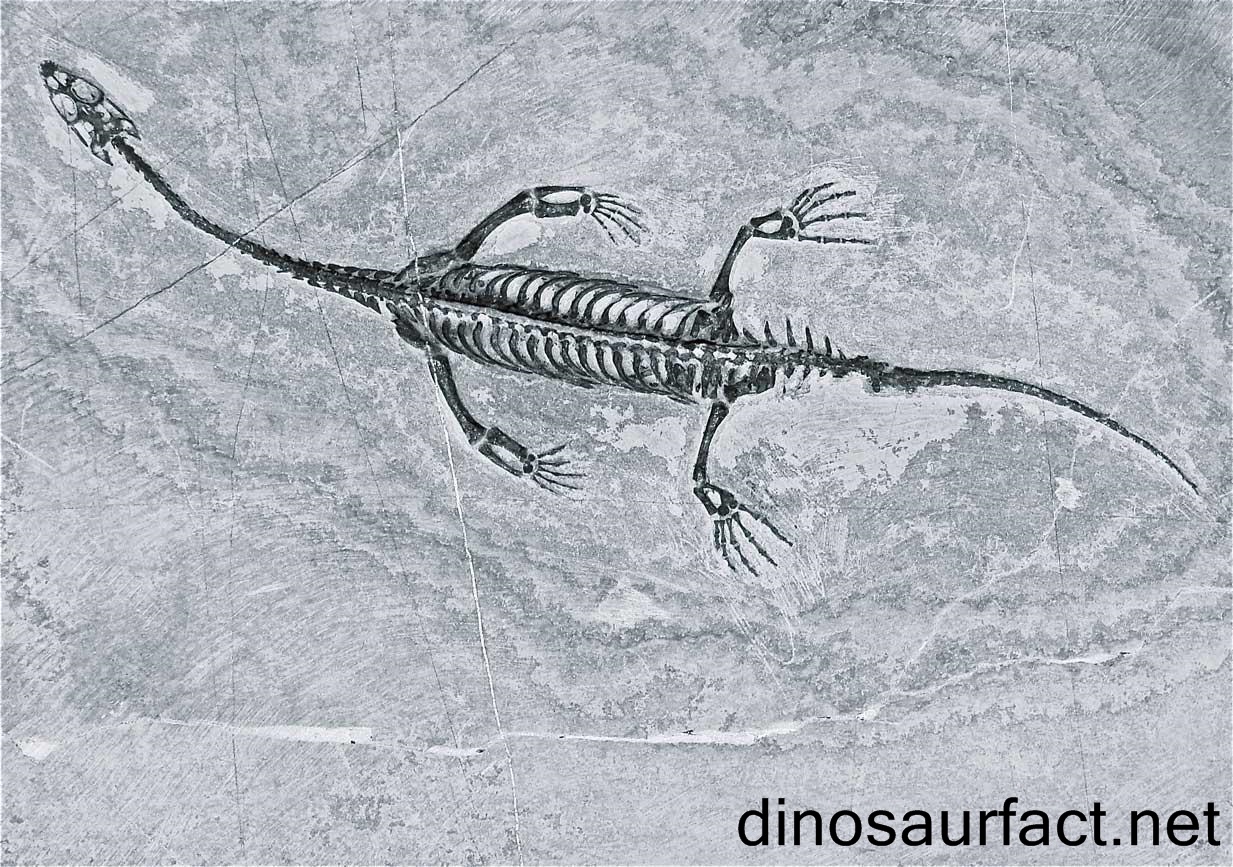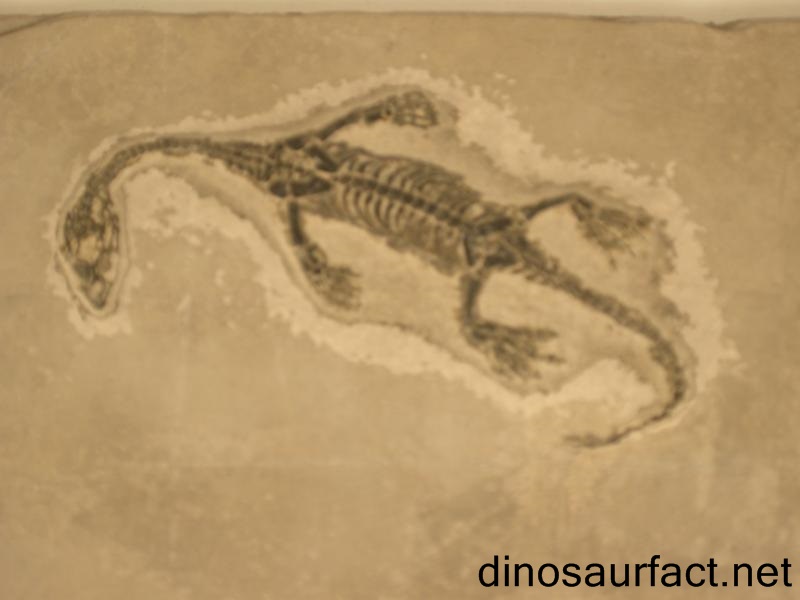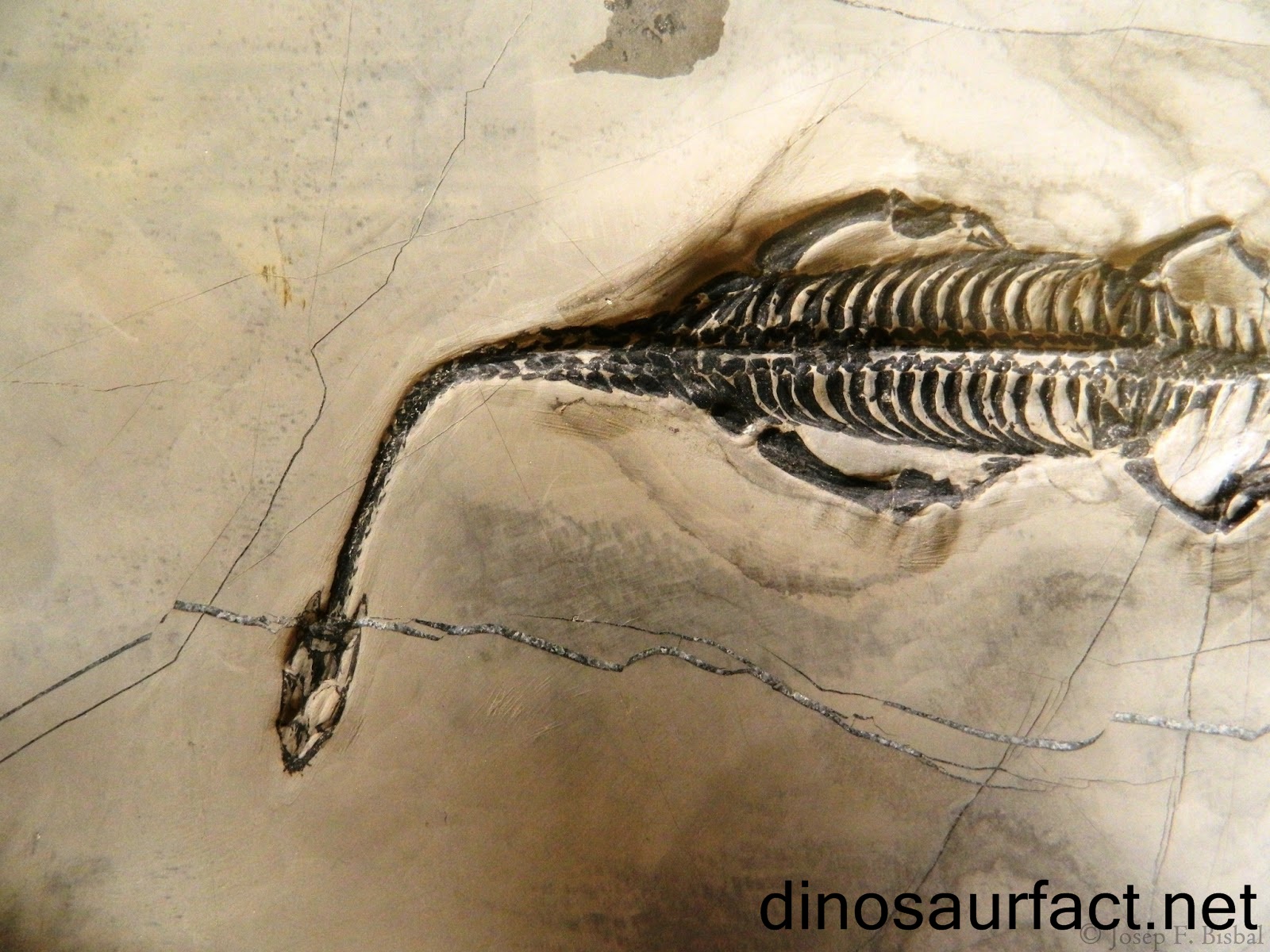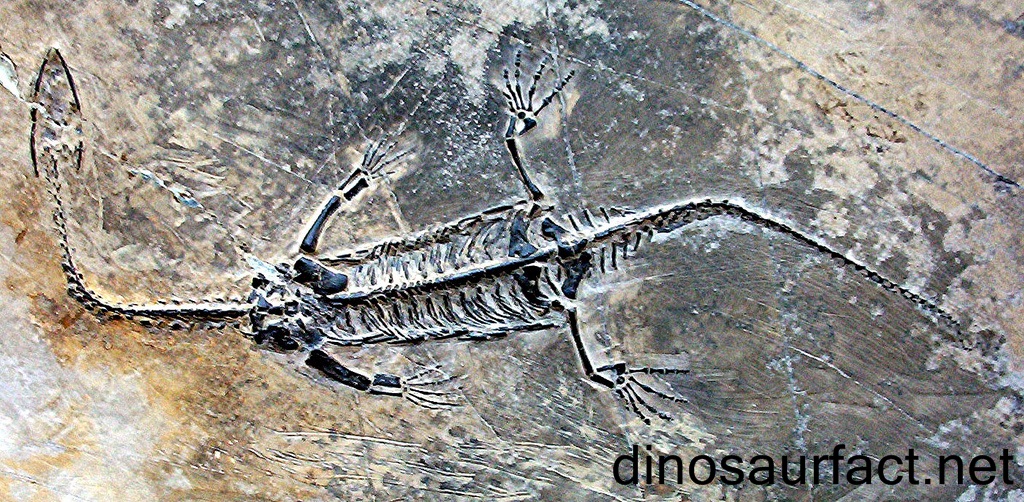 Click to visit the previous Marine Specie bio
Click to visit the previous Marine Specie bio
 |
|
 |
|
Kingdom: Animalia
Phylum: Chordata
Class: Sauropsida
SuperOrder: Sauropterygia
Order: Nothosauroidea
SubOrder: Pachypleurosauria
Genus: Keichousaurus
 |
|
 |
|
 |
|

The Keichousaurus was an aquatic reptile which lived on the earth in the middle Triassic period of the Mesozoic Era. Its name sounds like the name of a dinosaur, but the Keichousaurus wasn't one. It is classified under order Nothosauroidea, which is not related to order Dinosauria. Its morphology indicates that the organisms like the Keichousaurus may have evolved from land dwelling reptiles.
The fossils of the Keichousaurus were discovered in China, but it is thought to have existed everywhere in the Asian oceanic waters. This is because many fossils of the Keichousaurus are uncovered in Asia very frequently even today and are sold on the various online stores.
The Keichousaurus was in existence about 245 to 230 million years ago. This is period lies between the Ansian and Carnian ages of the Triassic, although certain scientists believe that it could have existed well towards the end of the Triassic period. Its extinction is sometimes attributed to the geological and climatic changes which occurred at the end of the Triassic period.
The Keichousaurus was a small creature, growing to sizes of 30 to 60 centimeters. Certain specimens are distinctly larger than the above mentioned size, but these are considered exceptions.
Etymology
The name of the Keichousaurus is derived from the location of its discovery. Its fossils were first discovered in the Kweichow province of China. The suffix 'saurus' is derived from the Greek word 'sauros' which translates to 'lizard'. The appearance of the Keichousaurus was very much like a lizard and hence this name was chosen for it.
The remains of the Keichousaurus were christened by paleontologist Chung Chien Young in 1958.
Classification
The exact taxonomic classification of the Keichousaurus is still debatable. But the most paleontologists classify it under suborder Pachypleurosauria. The higher classification of class Sauropsida and super order Sauropterygia is almost universally accepted.
It was initially grouped under family Pachypleurosauridae but it was later found to resemble Nothosaurs more closely than Pachypleurosaurs and hence was removed from this family.
Three species are defined under genus Keichousaurus, namely K. hui, K. lunensis and K. yuananensis.
Discovery of fossils
The holotype of the Keichousaurus was discovered in the Kweichow province of China in 1956. This region is currently called Guizhou.
These fossils were discovered by local Chinese farmers. They looked like a 'dragon' to these farmers and dragons form an integral part of the Chinese culture. Hence the farmers preserved these remains. In the year 1957, a professor from Beijing happened to visit Kweichow and noticed these remains. He delivered them to Young at the Institute of Vertebrate Paleontology and Paleoanthropology in Beijing.
After this initial discovery, many fossils have been found all over China which are putatively attributed to the Keichousaurus.
Nature of fossils
- Multiple complete skeletons of the Keichousaurus have been found all over China. Due to this, its physical appearance is very well known.
- The skull of the Keichousaurus was small and had a three sided appearance. It had one single column of sharp teeth. The orbits on the skull were conspicuous.
- The neck of the Keichousaurus had 22 cervical vertebrae. Its tail had 37 coccygeal segments.
- The Keichousaurus had a strong Ulna, which is a forearm bone and a thick Humerus, which is an upper arm bone. This indicated that it may have intermittently visited land as well.
- Its skeleton did not have a sternal bone.
Chung Chien Young
Born Yang Zhongjian, C. C. Young was the pioneer of vertebrate paleontology in China. He had singlehandedly elevated China to an important position in the paleontology circles during the course of his career.
Young was born in a small town in the Shaanxi province of China. He graduated from the Peking University in 1923 and then went on to receive his doctorate from the University of Munich.
Young had collected and examined hundreds of dinosaur remains, which included sauropods, prosauropods, stegosaurus and ornithopods. He is one the most respected geologists of China.
Physical characteristics
- The Keichousaurus was a tiny reptile. The smallest specimens were only 6 to 6.5 inches in length and weighed only about 400 to 500 grams. The largest specimens were a little less than twice this size.
- As no skin outlines have been seen with the Keichousaurus fossils, its exact weight is a difficult to determine.
- The Keichousaurus has a long and flexible neck. It had a small head which was easily borne by its delicate neck.
- The extremities of the Keichousaurus were muscular and robust. They had five digits each.
- Some paleontologists believe that the hands and feet of the Keichousaurus were webbed rather than flat.
- The Keichousaurus had a long tail as well. This helped the Keichousaurus to swim swiftly.
Habits and habitat
- The Keichousaurus was carnivorous in its feeding habits. Its teeth strongly indicate this nature. It likely used its long neck to capture its prey with dexterity. Its limbs did not show any grasping features.
- It derived its nourishment from smaller fish. There is no evidence indicating that the Keichousaurus hunted on land.
- The structure of its forelimbs suggested that the Keichousaurus visited land at least sometime during the course of its life.
- Certain paleontologists also theorize that the Keichousaurus could have been amphibious, living in swamps and mangroves and frequently crawling on land.
- The Keichousaurus hui fossils showed the presence of intra-abdominal young ones. This revealed that some of the species of genus Keichousaurus did not lay eggs and gave direct birth to their off-springs.
- The habitat of the Keichousaurus comprised of brackish waters, swamps and lakes.
Related and coexisting species
The Keichousaurus was related to other Nothosaurs of the Triassic period like the Nothosaurus. Along with that, it was most probably related to the Dactylosaurus and the Ammosaurus.
The Keichousaurus coexisted with other Triassic Serpulids, Microconchids and cephalopods.
Conclusion
The Keichousaurus was present in large numbers in Asia during the middle Triassic period. Its remains are considered collector's items and are frequently sold online. Many counterfeit fossils are also seen in these stores.
The muscled arms of the Keichousaurus indicate that it moved on land in a crawling motion, gathering momentum using its forelegs. This, coupled with the other typical reptilian characteristics of its fossils, strongly suggests that species like the Keichousaurus had terrestrial ancestors that adapted to an aquatic lifestyle.
Although the Keichousaurus was not a dinosaur, it is very well possible that its lineage distantly crossed paths with the lineage of Triassic dinosaurs.
Index
Extinct Profiles
 Triassic Dinosaurs
Triassic Dinosaurs Jurassic Dinosaurs
Jurassic Dinosaurs Cretaceous Dinosaurs
Cretaceous Dinosaurs Pterosaurs
Pterosaurs Marine Reptiles
Marine Reptiles Dinosaur Extinction
Dinosaur Extinction